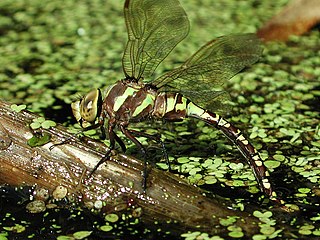 W
WAeshna canadensis, the Canada darner, is a species of dragonfly in the family Aeshnidae. It is common throughout southern Canada and the northern United States.
 W
WAeshna subarctica, the subarctic darner, is a species of darner in the family Aeshnidae. It is found in Europe & Northern Asia and North America.
 W
WAeshna tuberculifera, the black-tipped darner, is a species of darner in the dragonfly family Aeshnidae. It is found in North America.
 W
WAgrionoptera insignis allogenes known as the red swampdragon is a subspecies of dragonfly in the family Libellulidae. It is found in Australia, New Guinea, the Solomon Islands and possibly New Caledonia.
 W
WAmantis nawai is a small species of praying mantis native to Eastern Asia. Amantis nawai are parthenogenetic, and males are uncommonly seen.
 W
WThe eastern willow miner bee is a species of miner bee in the family Andrenidae. It is found in North America.
 W
WAphaenogaster picea is a species of ant in the family Formicidae.
 W
WArchiargiolestes pusillus is a species of Australian damselfly in the family Megapodagrionidae, commonly known as a little flatwing. It is endemic to south-western Australia, where it inhabits streams, bogs and swamps.
 W
WAustroaeschna anacantha is a species of dragonfly in the family Telephlebiidae, known as the western darner. It is found in south-western Australia, where it inhabits rivers and streams.
 W
WAustrocordulia refracta is a species of dragonfly in the family Austrocorduliidae, commonly known as the eastern hawk. It is a medium-sized, dull brown dragonfly, endemic to eastern Australia, where it inhabits streams and pools.
 W
WAustrogynacantha is a genus of dragonfly in the family Aeshnidae. Austrogynacantha heterogena, commonly known as the Australian duskhawker, is the only known species of this genus which is found in Australia and New Caledonia.
 W
WAustrogynacantha is a genus of dragonfly in the family Aeshnidae. Austrogynacantha heterogena, commonly known as the Australian duskhawker, is the only known species of this genus which is found in Australia and New Caledonia.
 W
WAustrolestes aridus is an Australian species of damselfly in the family Lestidae, commonly known as an inland ringtail. It is widespread across inland Australia, where it inhabits streams, pools, and ponds.
 W
WAustrosticta is a genus of damselflies belonging to the family Isostictidae. It is endemic to northern Australia. Species of Austrosticta are medium-sized damselflies, dull grey-brown in colour.
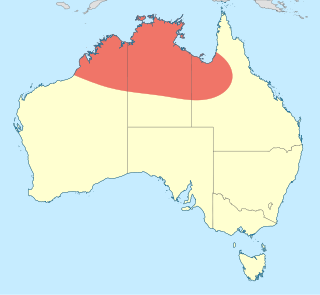 W
WAustrosticta fieldi is a species of damselfly in the family Isostictidae, commonly known as a northern pondsitter. It has been recorded from Northern Territory, Australia, where it inhabits streams.
 W
WCamacinia othello is a species of dragonfly in the family Libellulidae known commonly as the black knight. It is native to Indonesia, Papua New Guinea, the Solomon Islands, and the Northern Territory and Queensland in Australia.
 W
WCeresa albescens, is a species of treehopper, of the genus Ceresa.
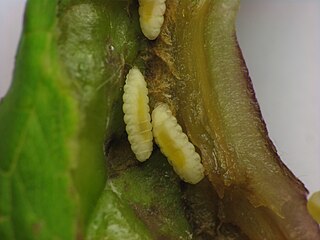 W
WDasineura tumidosae is a species of gall midges, insects in the family Cecidomyiidae.
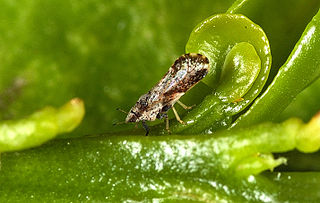 W
WDiaphorina citri, the Asian citrus psyllid, is a sap-sucking, hemipteran bug in the family Liviidae. It is one of two confirmed vectors of citrus greening disease. It has a wide distribution in southern Asia and has spread to other citrus growing regions.
 W
WDiplectrona modesta is a species of netspinning caddisfly in the family Hydropsychidae. It is found in North America.
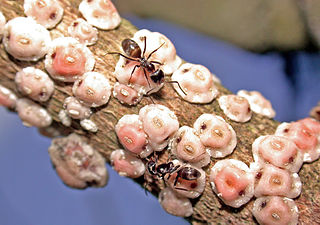 W
WDorymyrmex brunneus is a species of ant in the genus Dorymyrmex. Described by Forel in 1908, the species is endemic to several nations in South America.
 W
WDromaeschna is a genus of dragonflies in the family Telephlebiidae. Species of Dromaeschna are large dragonflies endemic to north-eastern Australia.
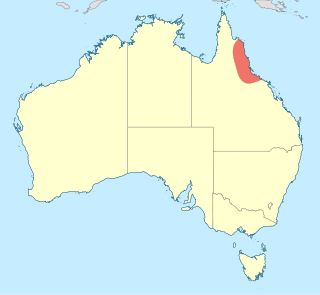 W
WDromaeschna weiskei is a species of dragonfly in the family Telephlebiidae, known as an ochre-tipped darner. It inhabits streams in coastal rainforests of north-eastern Queensland, Australia.
 W
WEphemerella dorothea is a species of spiny crawler mayfly in the family Ephemerellidae. It is found in North America.
 W
WForelius brasiliensis is a species of ant in the genus Forelius. Described by Forel in 198 the species is endemic to South America.
 W
WFormica glacialis is a species of ant in the family Formicidae.
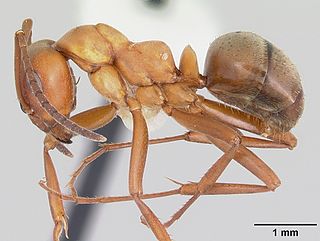 W
WFormica subintegra is a species of slave-making ant in the genus Formica. Formica subintegra seems to be obligate parasites, enslaving ants of the fusca group of Formica. The ants are not active outside the nest except during slave-raids; foraging is conducted entirely by their slaves, which make up 70-90% of the colony.
 W
WIxodiphagus hookeri, the tick wasp, is a chalcid wasp which lays its eggs into ticks. It seems to use a symbiotic bacteria, Wolbachia pipientis, to weaken the tick's immune system.
 W
WThe Japanese cockroach, also known as the Yamato cockroach, is a cockroach native to Japan, adapted to cooler northern climates. It has a flexible univoltine or semivoltine lifecycle, depending on the timing of its hatching, and is unusual in being able to spend two winters as diapause nymphs before reaching maturity.
 W
WLinepithema micans is a small species of ant from the genus Linepithema which was described by Forel in 1908. This ant is endemic to southern South America. In Brazil, it is considered a pest of vineyards in acting as the main species associated with the coccid Eurhizococcus brasiliensis. It is still a poorly studied species. Their abundant larvae are round and whitish, almost indistinguishable from the proximate species Linepithema humile, better known as the invasive Argentine ant.
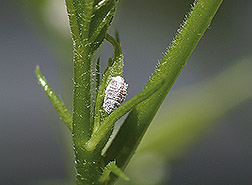 W
WMaconellicoccus hirsutus, is a pest of many plants, trees, and shrubs. It infests hibiscus, citrus, coffee, sugar cane, annonas, plums, guava, mango, okra, sorrel, teak, mora, pigeon pea, peanut, grapevine, maize, asparagus, chrysanthemum, beans, cotton, soybean, cocoa, and many other plants. The pest forms colonies on the host plant, and if left undisturbed, the colonies will grow into large masses of white waxy coverings on branches, fruiting structures, leaves, and even whole plants, including large trees.
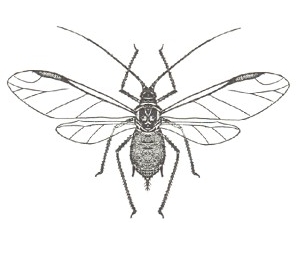 W
WThe Chrysanthemum Aphid,, is an aphid in the superfamily Aphidoidea in the order Hemiptera. It is a true bug and sucks sap from plants.
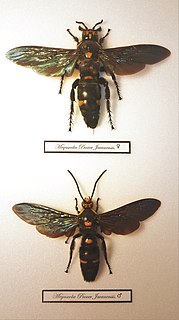 W
WMegascolia procer is a solitary wasp in the family Scoliidae. Found in the Indonesian islands of Sumatra and Java, it is one of the largest wasps in the world, with a wingspan of 11.6 cm.
 W
WMiniargiolestes is a monotypic genus of damselflies in the family Megapodagrionidae. The single species of this genus, Miniargiolestes minimus, commonly known as a stream flatwing, is a small damselfly, metallic black to green in colour with white markings. It is endemic to south-western Australia, where it inhabits streams.
 W
WMyrmecocystus mendax is a species of ant in the family Formicidae. It occurs in Mexico and Southwestern United States.
 W
WMyrmecocystus mimicus is a North American species of ant in the genus Myrmecocystus. The species is widely distributed, from Kansas south to Texas and Mexico, and west to California.
 W
WMyrmecocystus placodops is a species of ant in the family Formicidae.
 W
WNannophlebia eludens is a species of dragonfly of the family Libellulidae, known as the elusive archtail. It inhabits streams and rivers of northern Australia. It is a small dragonfly with black and yellow markings and a slender body.
 W
WNannophya dalei is a species of dragonfly of the family Libellulidae, known as the eastern pygmyfly. It inhabits boggy seepages and swamps in south-eastern Australia. It is a small dragonfly with black and red markings.
 W
WNannophya occidentalis is a species of dragonfly of the family Libellulidae, known as the western pygmyfly. It inhabits boggy seepages and swamps in south-western Australia.
 W
WNeurocordulia xanthosoma, also called the orange shadowdragon, is a species of emerald dragonfly in the family Corduliidae. It is found in North America.
 W
WNomia universitatis is a species of bee in the family Halictidae. It is native to the continental United States.
 W
WPelitropis rotulata is a species of tropiduchid planthopper in the family Tropiduchidae. It is found in the Caribbean Sea and North America.
 W
WPetalura ingentissima, the giant petaltail, has been described as the world's largest dragonfly, with a wingspan of 160 mm. It is found in Queensland, Australia.
 W
WPheidole moerens is an ant, a species of higher myrmicine in the family Formicidae.
 W
WPheidole rhea is a species of ant and a higher myrmicine in the family Formicidae.
 W
WPheidole xerophila is a species of ant and a higher myrmicine in the family Formicidae.
Pistoria is a genus of butterflies in the family Lycaenidae. The single species of this monotypic genus, Pistoria nigropunctata, is found in New Guinea.
 W
WPolyrhachis sophocles is a species of ant in the subfamily Formicinae, found in Sri Lanka.
 W
WRhopalomyia californica, the coyote brush bud gall midge, is a species of gall midges, insects in the family Cecidomyiidae.
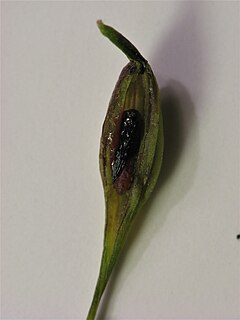 W
WRhopalomyia pedicellata is a species of gall midges, insects in the family Cecidomyiidae.
 W
WThe shadow darner is a species of dragonfly in the family Aeshnidae. It is found in almost all of Canada and most states in the United States.
 W
WStathmopolitis is a genus of moths belonging to the family Tineidae. It is the only genus of the Stathmopolitinae subfamily and contains only one species, Stathmopolitis tragocoprella, which is found on the Canary Islands.
 W
WTapinoma luridum is a species of ant in the genus Tapinoma. Described by Emery in 1908, the species is endemic to the Democratic Republic of Congo and Guinea.
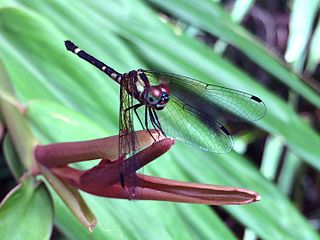 W
WTetrathemis irregularis cladophila known as the rainforest elf is a subspecies of Tetrathemis irregularis, a dragonfly in the family Libellulidae found only in Australia.
 W
WTrichopsocus clarus is a species of Psocoptera from Trichopsocidae family that can be found in United Kingdom and Ireland. It can also be found on Azores, Canary Islands, in Finland, France, Germany, Italy, Latvia, Madeira, Poland, Portugal, Spain, Sweden, Switzerland, and the Netherlands. The species are either yellow or orange coloured. It is also found in Australia and New Zealand